|
Getting your Trinity Audio player ready...
|
OWN VOICE. ~ InPerspective by Gregg Dieguez and Leo Gomez —
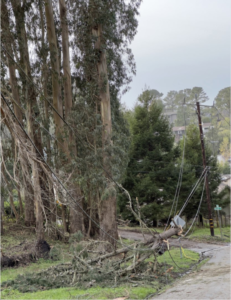
Those of us who live here knew it all along, but when Supervisor Mueller – forced into office a few days early by the emergency – couldn’t get ahold of us during the January storm, it became more evident to the County that the Coastside is very vulnerable to outages in power, cellular phone and internet services. The good news is that the head of Government Affairs at Comcast has my phone and email ready at hand and was sending me updates on each outage. The bad news is that I couldn’t get them unless and until I was able to drive over the hill for a connection. And when I got them, I couldn’t tell people here about the situation. Thanks to local resident Leo Gomez and a team of intrepid techies, we now have a firm understanding of what our communications problems and vulnerabilities are. Here, in the first installment of a series, is a summary of our communication issues.
Footnotes: to use, click the bracketed number and then click your browser Back button to return to the text where you were reading.
Images: Click to enlarge for improved readability in a new window.
Our Connectivity Problems:
The recent severe storms that affected San Mateo County in December, 2022 and January 2023, caused prolonged power and communications outages of up to 240+ hours. These outages significantly impacted the ability of residents and first responders to communicate with emergency services. During this period, falling trees destroyed power and telecommunication lines, resulting in extensive outages, including the complete loss of communications due to the lack of resilience of the power and communication systems in the area. Moreover, the entire Coastside was disconnected from Xfinity’s services twice in one week, causing significant disruptions in areas where home fiber or analog telephone services were not available. These outages are not isolated incidents, and residents in rural areas of San Mateo County regularly experience extremely slow internet services and poor cellular coverage, leading to even longer power and communication outages.
Given the demographics in our area, with large segments of the population over 50 years of age, and the increased risk of heart attacks in that age group, the inability to call for help, as well as the blockage of our only emergency vehicle arteries, are life-threatening.
The San Mateo County Coastside has faced persistent issues with cellular and internet connectivity, ranging from an inability to browse the web to a lack of access to emergency services during power, fiber and cable outages. The root causes of these communication problems are multi-faceted and include a lack of fiber optic cable redundancy for Comcast/Xfinity Communications, a lack of long-term generator power backup at many Coastside cellular sites, and gaps in coverage in certain areas.
To address these issues, the California Public Utilities Commission (CPUC) provided resiliency strategies that all cellular providers operating in fire hazard zones, such as those along our SMC Coastside could adopt, including maintaining a redundant fiber optic connection via a secondary communication provider or a secondary fiber optic path. Additionally, these cellular service providers have been asked to have at least 72 hours of backup power, typically through natural gas or diesel generators.[1]
Implementing these CPUC requirements through rigorous auditing and enforcement could help resolve the connectivity problems experienced by Coastside residents. Specifically, Comcast/ Xfinity could create redundancy in their network by leasing fiber optic cables from AT&T, which already has a redundant path of fiber optic cable on the Coastside via the Tom Lantos Tunnel. Alternatively, those vendors could establish a redundant path underground alongside their current above-ground infrastructure, or utilize the same path as AT&T through the Tom Lantos Tunnel.
Another solution would be for the community to establish and operate its own fiber optic system that could be leased by multiple internet service providers, to compete with the oligopoly currently held by Comcast/Xfinity and AT&T.
Contributing Causes:
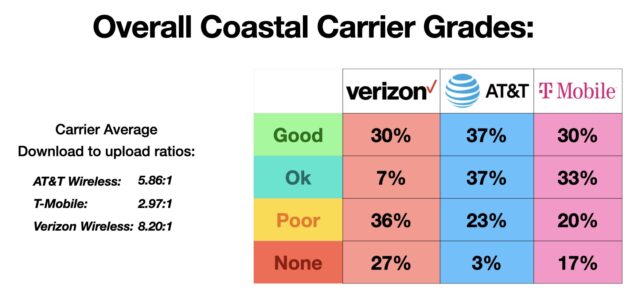 A. Cable Redundancy: AT&T has a fiber cable which runs in a loop from Palo Alto, through HMB, to Pacifica and back. Comcast has a single cable, primarily above ground, running from Palo Alto into Montara, and dead-ending there. As a result, when trees fall and cut the cable, AT&T can continue to provide service from the other direction. Comcast cannot. Comcast customers with poor cell service, who rely on phone service (such as VoIP wireless at home) through the internet thus lose BOTH means of communication for help and emergency updates.
A. Cable Redundancy: AT&T has a fiber cable which runs in a loop from Palo Alto, through HMB, to Pacifica and back. Comcast has a single cable, primarily above ground, running from Palo Alto into Montara, and dead-ending there. As a result, when trees fall and cut the cable, AT&T can continue to provide service from the other direction. Comcast cannot. Comcast customers with poor cell service, who rely on phone service (such as VoIP wireless at home) through the internet thus lose BOTH means of communication for help and emergency updates.
B. Poor Cell Coverage: Based on our tests at 29 locations from Montara to Half Moon Bay, 26% to 63% of locations had Poor to NONE service. [chart at right>>] Further, the speeds of service were uniformly much lower than national averages for each carrier [chart below].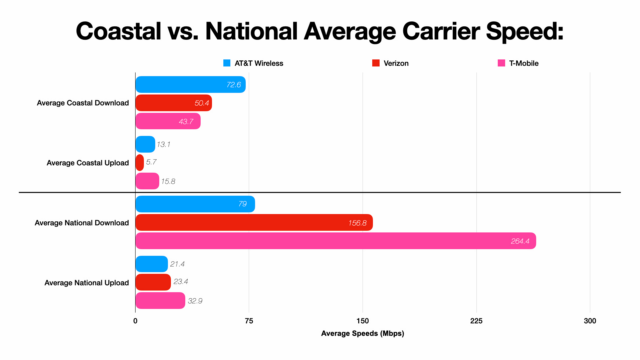 Verizon provides about one-third the download speed of their national average; T-Mobile provides less than one-sixth of their national average. Coverage is poorest in Moss Beach, and North and East Montara, in spite of cell towers atop a hotel on Main St. in Montara.
Verizon provides about one-third the download speed of their national average; T-Mobile provides less than one-sixth of their national average. Coverage is poorest in Moss Beach, and North and East Montara, in spite of cell towers atop a hotel on Main St. in Montara.
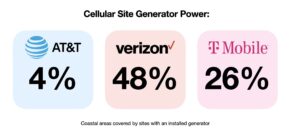
C. Lack of Backup Power: While the CPUC requires 72-hour back-up power to support essential communications equipment and minimum service levels for the public, most cellular sites on the Coastside lack a backup generator. Despite the Commission’s guidelines, service providers have not complied with them (only 20% of Coastside cellular sites have backup generators), and the CPUC has not taken steps to enforce them, as evident from our survey [chart above right >>]. Thus, during a power outage, customers will lose cellular service after 4-6 hours or whenever the batteries run out. This problem is compounded by the Coastside’s unique geography of hills and mountains, where signals will not pass, making overlapping (backup) cellular coverage inadequate with the current antennae installations.
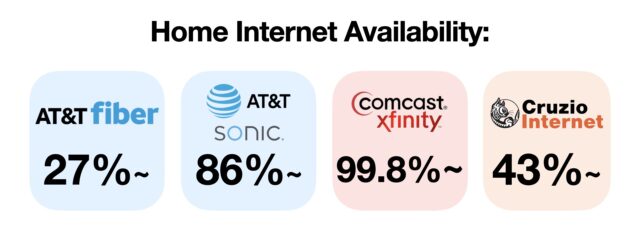 D. Lack of modern internet service: While the modern world has advanced to fiber optic cable, with speeds 100 times higher than most Coastside residents can get, we have two major options: 1) Coaxial cable from Comcast, widely available but, as mentioned above, not available when their non-redundant line is cut, and 2) Copper wire/DSL via the old AT&T land lines, which are slow and being discontinued. Only 27% of Coastside residences have access to AT&T fiber. [chart at right>]
D. Lack of modern internet service: While the modern world has advanced to fiber optic cable, with speeds 100 times higher than most Coastside residents can get, we have two major options: 1) Coaxial cable from Comcast, widely available but, as mentioned above, not available when their non-redundant line is cut, and 2) Copper wire/DSL via the old AT&T land lines, which are slow and being discontinued. Only 27% of Coastside residences have access to AT&T fiber. [chart at right>]
In addition to trying to get our elected and public officials to enforce their own regulations and carriers to provide redundancy, there is another option: a Community Fiber Network. There is a growing movement nationwide of towns creating their own fiber networks, breaking free of the national oligopoly of Comcast and Charter, and reducing costs while improving service. We will discuss this option, and other solutions, in future articles.
Mr. Gomez has already given an presentation to the MCC as a preview of his upcoming report. The presentation is on the MCC website here: http://midcoastcommunitycouncil.org/s/2023-03-08_Coastal_Communication_Resilience.pdf
For those wishing a narrative explanation, video of his MCC presentation is here: https://youtu.be/cPfSmEpqgZg?t=1190
A full report is in peer review, and will be issued in the next few weeks, and discussed in future articles in the Buzz and at MCC meetings.
For those who can’t wait, there is this (somewhat salacious) video which explains the reality of our current national internet inequality:
FOOTNOTES:
[1] CPUC Resiliency Strategy:
https://tinyurl.com/CPUC-Comm-Page
 More From Gregg Dieguez ~ “InPerspective”
More From Gregg Dieguez ~ “InPerspective”
 Mr. Dieguez is a native San Franciscan, longtime San Mateo County resident, and semi-retired entrepreneur who causes occasional controversy on the Coastside. He is a member of the MCC, but his opinions here are his own, and not those of the Council. He lives in Montara. He loves a productive dialog in search of shared understanding. >>
Mr. Dieguez is a native San Franciscan, longtime San Mateo County resident, and semi-retired entrepreneur who causes occasional controversy on the Coastside. He is a member of the MCC, but his opinions here are his own, and not those of the Council. He lives in Montara. He loves a productive dialog in search of shared understanding. >>
<< Leo Gomez is a Technical Solutions Consultant with 19 years of experience facilitating IT solutions using communication technology to host business events and connect client organizations. He has a lifetime fascination with wireless technologies and infrastructure. During the COVID pandemic, Mr. Gomez pursued a hobby of visiting and mapping every telecommunications link in our area, which served as the foundational research for this story and led to the creation of his interactive map.


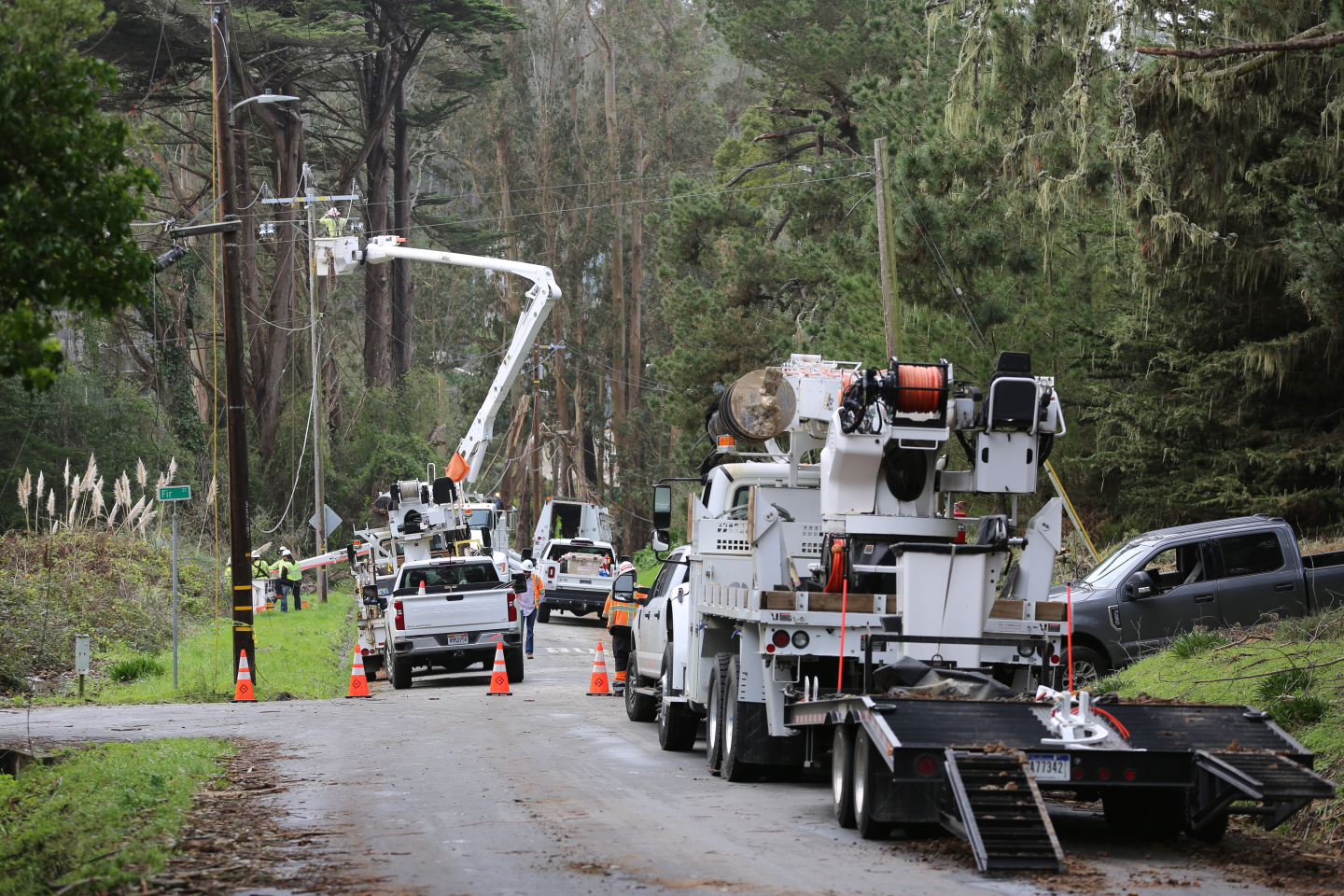


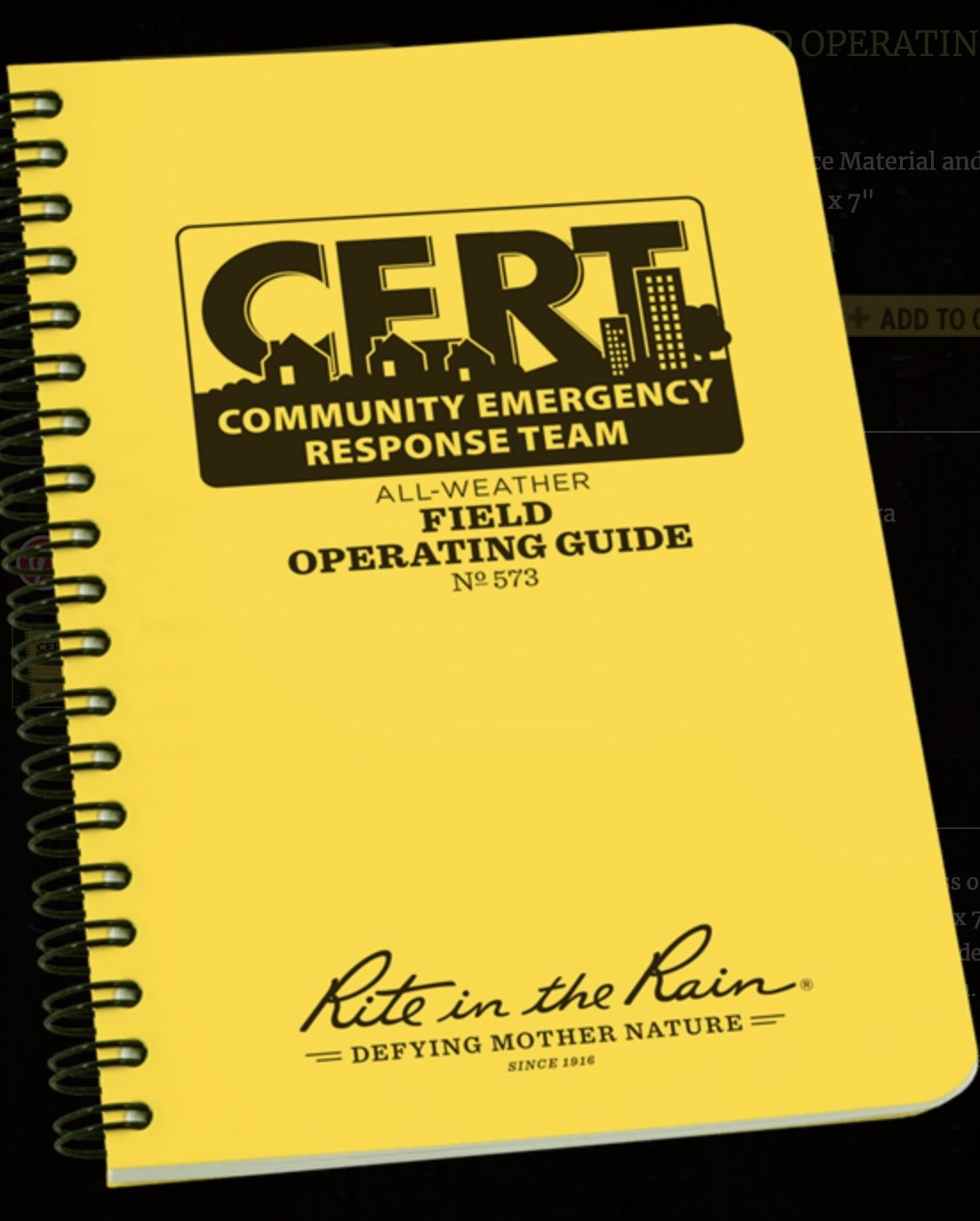
Those Eucalyptus all over must go!